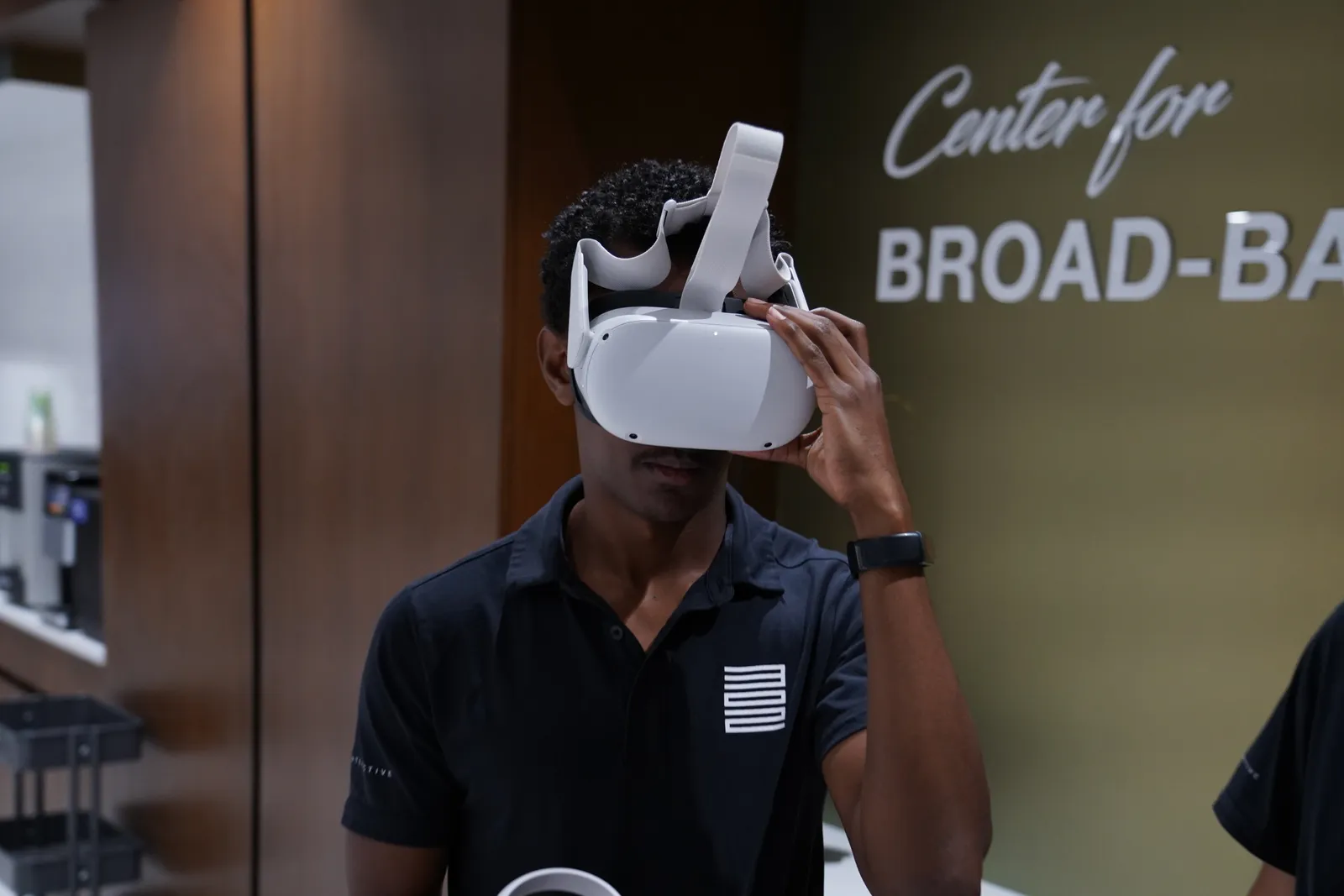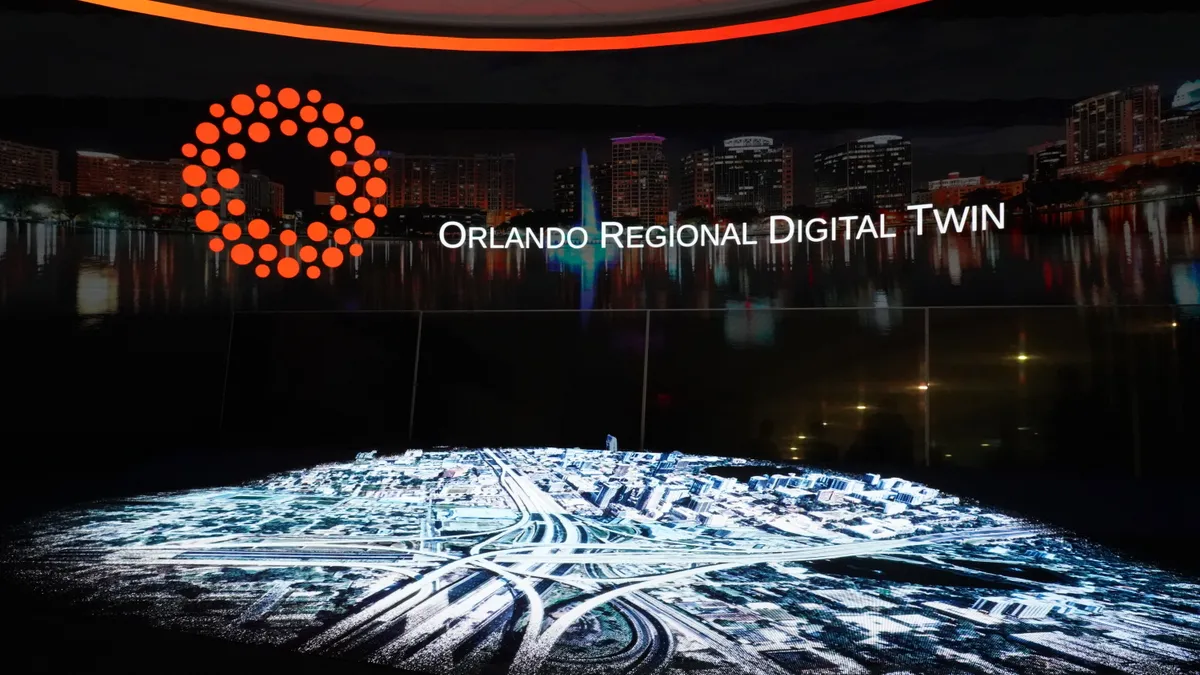The Orlando Economic Partnership this week unveiled the digital twin of the metro region that it built this year with interactive content developer Unity.
OEP — a non-profit economic and community development organization — says the 3D technology maps 800 square miles, with 40 square miles recreated in “high fidelity.” It says it’s the first large regional digital twin in use by an economic development organization.
The goal was to establish a tool that can showcase the area and pull in real-time data to inform public or private sector decisions on infrastructure, utilities and business development.
The physical display of the digital twin is currently housed at the organization’s headquarters in downtown Orlando. Unity, which is largely known for video game development, also made a virtual reality experience that allows users to “go into the digital twin,” said OEP CEO Tim Giuliani, or feel as if they’re inside the city. The organization could take those VR headsets to trade shows or whenever it goes out to market to companies, he said.

For the next phase of the digital twin, OEP will seek to make the product more digitally accessible in 2023 and add partners — potentially development companies, commercial brokers, utilities or master planners — that could help fund the product and build out its functionalities and use cases, Giuliani said.
The tool could ultimately generate revenue for the partnership, he said. An OEP spokesperson said that, to date, spending on hardware and software exceeded $1 million, “plus dozens of hours planning, implementing and testing.”
“Using it for marketing purposes is the easiest, fastest way to see value out of the digital twin. Where I want to see it get to next year in that second phase is adding in real-time data,” whether that’s connecting it to sensors, traffic data or real estate listings, “so that it goes from sort of a digital representation to something that's updated in real time,” Giuliani said. A future phase will hopefully see it run scenarios and have some predictive qualities, he added.
Giuliani said the partnership has been in talks with the city of Orlando, which has a history of engaging on the smart cities concept and created its own “future-ready” master plan. OEP and elected officials have touted Orlando as “the MetaCenter of the Metaverse,” which Giuliani said is a nod to the area’s tech workforces.
Giuliani identified potential timely use cases where the digital twin could help. He pointed to an upcoming referendum on transportation infrastructure in Orange County that, if passed, would prompt rail line expansion planning. The same goes for master planning for nearby airports.
Additionally, the recent hurricane required monitoring lake levels to identify where storm drains were getting clogged and dispatch help to address the issue. In the future, sensors in the stormwater system could potentially be connected to the digital twin as a command center. “Is that something that's going to happen in six months? Probably not. But it’s totally within the capability set up in the digital twin,” he said.
“So those conversations are beginning now, but we really had to have the digital twin open and operational so that people can come in and see it and understand it,” Giuliani said. “It was too abstract to talk about it. They really have to see it to understand its capabilities and how it can be used for their own benefit.”












